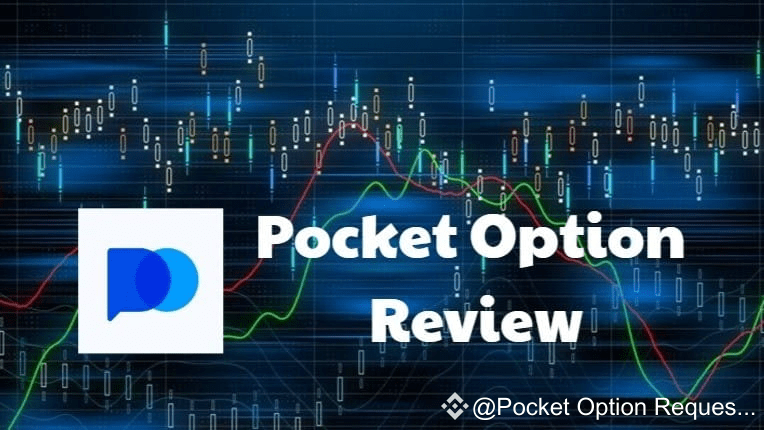Pocket Option OTC and Exchange Understanding Their Differences and Strategies

Pocket Option OTC and Exchange: A Comprehensive Guide
In the world of online trading, two distinct environments have emerged: Over-The-Counter (OTC) and exchange trading. Understanding the differences between these two methods is crucial for anyone looking to succeed in the trading arena. This article delves into the intricacies of Pocket Option OTC and Exchange, offering insights, trading strategies, and valuable tips for navigating these marketplaces effectively. Whether you are an experienced trader or a newcomer, knowing the distinctions can help you make informed decisions. For detailed OTC schedules, check out Pocket Option OTC and Exchange Hours Pocket Option Horario de los OTC y del Bolso.
What is Pocket Option?
Pocket Option is a popular online trading platform that allows users to trade various assets such as cryptocurrencies, forex, commodities, and stocks. The platform is known for its user-friendly interface, making it accessible for traders of all experience levels. One of the key features of Pocket Option is its flexibility, offering both OTC trading and traditional exchange trading options. Understanding these two avenues is essential to maximizing your trading potential.
Understanding OTC Trading
Over-The-Counter (OTC) trading refers to transactions that occur directly between two parties without a centralized exchange. In the context of Pocket Option, OTC trading allows for a unique trading experience where prices are determined by supply and demand in a decentralized manner.
Advantages of OTC Trading
- Flexible Trading Hours: OTC trading typically operates 24/7, allowing traders to execute orders at their convenience, regardless of traditional market hours.
- Lesser Price Manipulation: Since OTC is decentralized, there is usually less influence from large market players, leading to more authentic price settings.
- Variety of Assets: Pocket Option offers a wide range of assets in its OTC market, providing ample opportunities for traders to diversify their portfolios.
Exchange Trading Explained
In contrast, exchange trading occurs on regulated platforms where assets are traded in a more structured environment. Exchanges operate with established rules and infrastructure, ensuring a transparent trading experience.
Advantages of Exchange Trading
- Transparency: Since exchange trading occurs on regulated platforms, prices and trade volumes are publicly available, promoting trust and integrity in the trading process.
- Liquidity: Exchanges typically offer higher liquidity, making it easier for traders to enter and exit positions without causing significant price changes.
- Robust Security: Reputable exchanges invest in sophisticated security measures to protect users’ assets and personal information.
Key Differences Between OTC and Exchange Trading
Understanding the fundamental differences between OTC and exchange trading is essential for traders looking to switch between these environments.
| Feature | OTC Trading | Exchange Trading |
|---|---|---|
| Market Structure | Decentralized | Centralized |
| Trading Hours | 24/7 | Specific Hours |
| Price Transparency | Less Transparent | Highly Transparent |
| Liquidity | Varies | Generally Higher |
Best Practices for Trading on Pocket Option
Regardless of whether you choose to trade on the OTC market or the exchange, employing sound trading strategies is vital. Here are some tips to enhance your trading experience on Pocket Option:
1. Educate Yourself
Knowledge is power. Familiarize yourself with market trends, trading strategies, and the nuances of both OTC and exchange trading. Online courses, forums, and trading communities can be invaluable resources.
2. Develop a Trading Plan
A well-defined trading plan is crucial for maintaining discipline and managing risk. Your plan should include your trading goals, risk tolerance, and specific entry and exit strategies.
3. Practice with a Demo Account
Before diving into real trading, utilize Pocket Option’s demo account feature to practice your strategies and become comfortable with the platform’s tools and features.
4. Stay Updated
Keep track of news and events that may impact the financial markets. Economic indicators, political developments, and global events can all affect asset prices.
5. Manage Your Risk
Implement strict risk management protocols to protect your capital. This includes setting stop-loss orders, diversifying your portfolio, and only trading with money you can afford to lose.
Conclusion
Pocket Option offers a versatile platform that caters to both OTC and exchange traders. Each trading environment has its advantages and unique characteristics, making them suitable for different types of traders. By understanding the distinctions and employing sound trading strategies, you can enhance your chances of success. Whether you are trading under the decentralized OTC model or the more structured exchange environment, continuous learning and adaptability are key to thriving in the dynamic world of online trading.


Post Comment